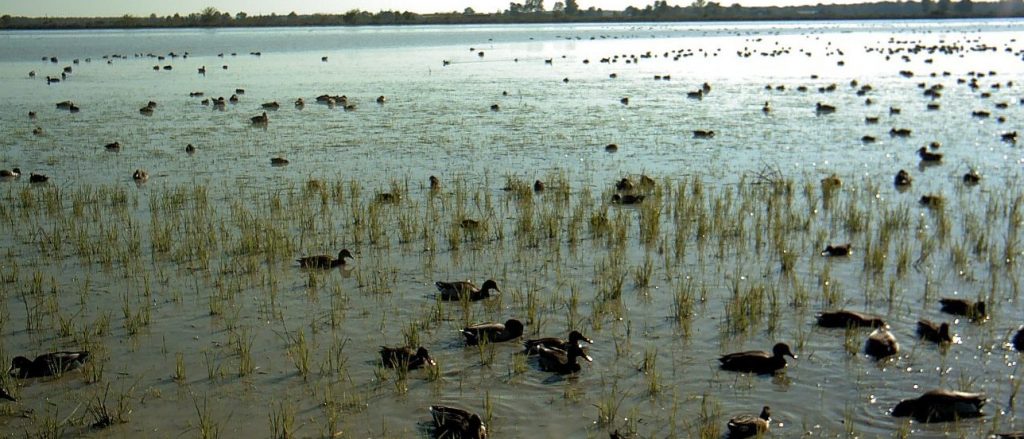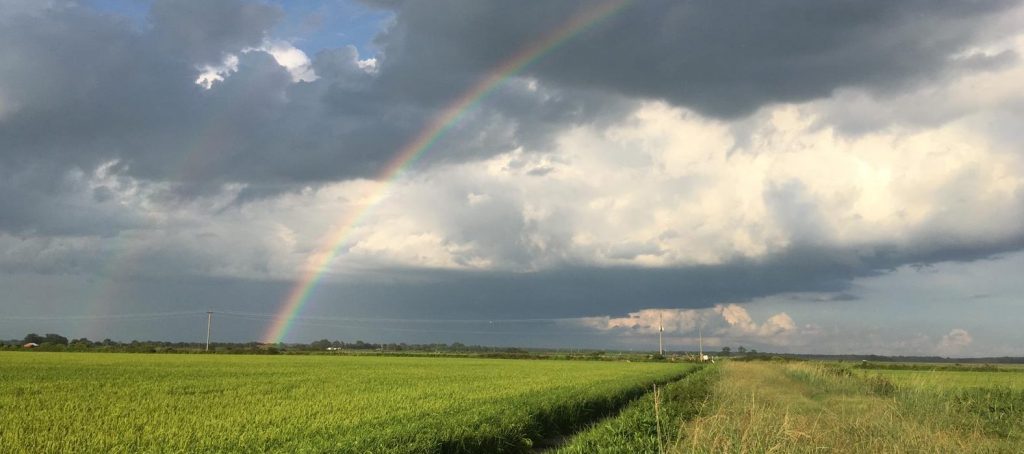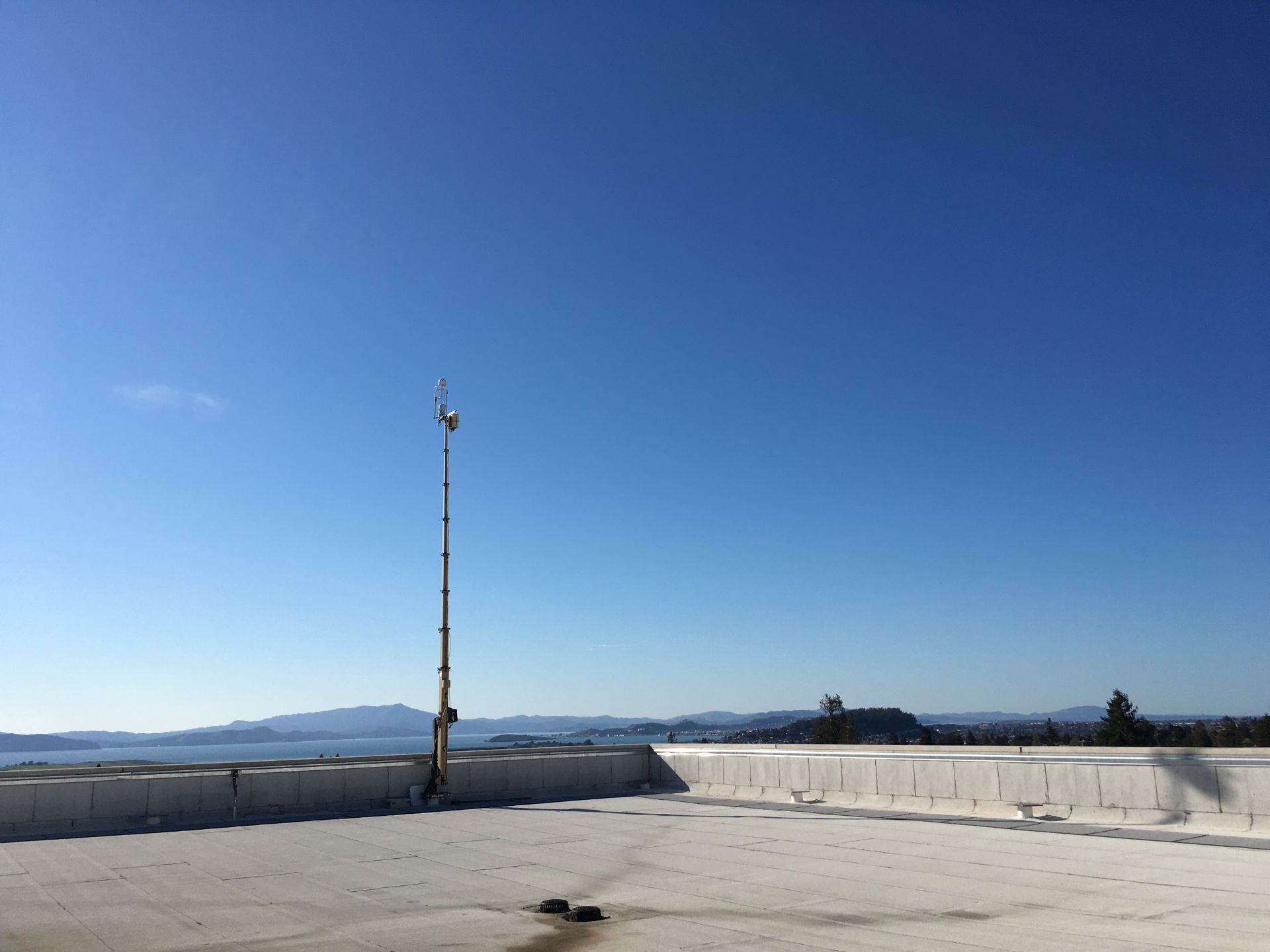
Photo taken from the US-HRA roughly halfway through the growing season. PC: Dr. Benjamin Runkle & Dr. Beatriz Moreno-Garcia
While many people in the AmeriFlux community may be familiar with rice and methane emissions, most are usually surprised by the connection rice has to the state of Arkansas, which accounts for about half of U.S. rice production. Rice fields in Arkansas are concentrated in the eastern part of the state on the Mississippi River’s alluvial plain. Within this region, our research team measures methane fluxes from two commercial rice fields near the village of Humnoke, AR. Our farming partners, the Isbell family, have used these fields to grow rice continuously for more than 50 years. Over the last 5 years, we’ve used the fields as a comparison study of how different irrigation treatments can help conserve local water resources while also reducing the amount of methane produced using a method known as alternate wetting and drying[1].

Phenocam record of ducks during post-harvest flood in late Fall at US-HRA & HRC sites. PC: Dr. Benjamin Runkle
Working within a commercial farm setting provides its own set of challenges and rewards. During the year, our towers have to be moved in response to different management events, including planting, harvesting, and post-harvest burning. We also take time around these events to carry out intensive sampling campaigns, including soil sampling, bulk density assessment, and grain collection. We also use the break to re-calibrate our instruments back in the lab. The site is remote and we rely on a photovoltaic system to supply power to our instruments year round, which becomes especially challenging during the winter months where optimal daylight hours are fewer. In addition to its rice growing, eastern Arkansas is also touted as the duck hunting capital of the world. The fields we use for research are regularly converted to hunting grounds every winter for approximately 3 months while we’re operating and measuring, which is sure to make any PI perspire a little more for the holidays.

Rainbow following seasonal rains common during the spring and summer for US-HRA & HRC sites. PC: Dr. Benjamin Runkle
Despite the challenges, working in this setting has been rewarding. We’ve seen promising potential for alternate wetting and drying as a practical method for rice farmers to greatly reduce the amount of methane produced in their fields. Through our work, we have also enjoyed rich collaboration helping our farmers better understand what’s happening in the fields to help better inform management decisions. We’re looking forward to the AmeriFlux Year of Methane as we continue to explore methods associated with water resource conservation and reducing methane emissions within rice production.
– Colby Reavis (PhD Candidate) and Prof. Benjamin Runkle (University of Arkansas) authored this post for the AmeriFlux Year of Methane.




No Comments
Be the first to start a conversation